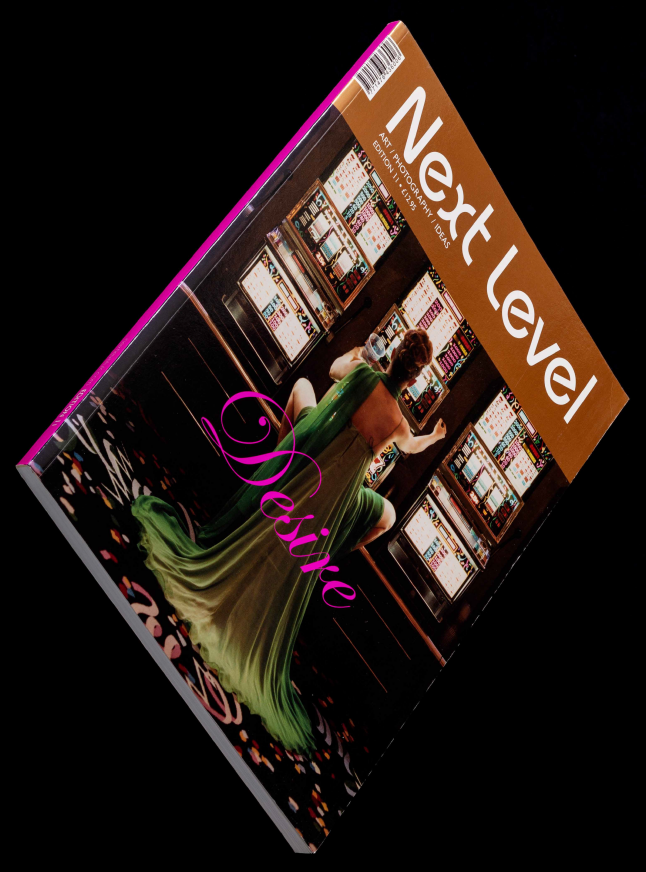Albrecht TübkeBecalmed and Bewitched

If, as Darwin so convincingly postulated, we originally came from the sea, cast off our scales, our fins and our gills, but not our reproductive organs, and colonised the land, then Albrecht Tübke’s portraits of swimmers might be perceived as retrospectively homely, a return home after a long absence. However, and counter-intuitively, these portraits have a worrying incongruity that gives them a wayward, unsettling demeanour. Since its invention, photography has always been an integral feature of the seaside holiday. We like to document those slightly unreal off-guard, off-duty, off-beam, on-break moments with our cameras, to prove to ourselves as much as to impress anyone else that they actually happened, that our orderly, humdrum, lives have periodically been punctuated by short interregnums of pleasurable and decadent behaviour.
Tübke unnervingly shifts the parameters in this familiar photographic genre. In his work, the camera’s victims are not beside the sea, but in it, not indulging in the banal pleasures of the beach, terrace or poolside, but exiled from them by the camera’s viewpoint, locations effaced by the generic ubiquity of sea and sky. There is nothing to relieve the intensity of the camera’s interrogative stare on its subject. If the seaside is a place where desires are fulfilled, then these bathers seem distinctly unfulfilled. All sites of desire remain out of sight beyond the frame and any sense of mise en scéne denied; the triggers of desire are firmly on-hold in this cold, uninviting water. The intensity of the camera’s gaze in its desire for knowledge, in turn, spurs on our desire to pin down the identities of these portrayed subjects who have, as a result, been reduced to the phenomena of specimens that are not so much celebrated here as investigated.
We know bodies support these heads, yet as they are submerged and out of sight, we are asked to re-invent them. This is detective work, as our memories and imaginations attempt to work forensically to establish our versions of the truth. The figures in question, helplessly vulnerable to scrutiny, also appear coldly imperious and immune to its threat, becalmed by the sea, bewitched by the lens. Singled out, they have become singularly idiosyncratic and plausible, their uniqueness unnervingly magnified.
Tübke has always had the unerring knack of imbuing his portraits, whether they be of anomie-stricken teenagers (Jugend, 1998-9), life-weary farm workers, (Dalliendorf, 2000) or blank-faced urban dwellers (Citizens, 2001-2), with a certain tension, one the causes of which are not immediately obvious but that nevertheless irresistibly engages the viewer. The images call for repeated contemplation, perhaps the only way for the viewer to fathom and pinpoint the zone of fascination – as opposed to the Barthesian ‘punctum’ – that energises them. This phenomenon is mutable rather than formulaic, though, transformed with Tübke’s changes of theme, location and context, his work’s little incongruences perhaps, its overstated banalities and understated eccentricities even.
Here in these portraits of bodiless heads levitating above a becalmed sea, the zone of fascination has been condensed into the individualities and identities depicted. Further, if the eyes are ‘the windows of the soul,’ as Kant insisted, then the viewer is deeply implicated here in a voyeuristic intrusion into those two innermost sanctums. In the 19th century, the indigenous peoples of North America accused European photographers of stealing their souls with their cameras. In scrutinising Tübke’s images we can perhaps begin to understand why. Despite the assumed complicity of the subjects here, the viewer is nevertheless left feeling a certain discomfort as if he or she has trespassed into the no-man’s-land between persona and soul.
The motif of people by the seaside has been captured by contemporary artists in various ways. Catherine Opie had them floating indolently on surfboards on a becalmed sea in her Surfers series. Rineke Dijkstra had them standing on the beach naively wan and disaffected in their ill-fitting swimsuits in her Beach Portraits. Massimo Vitali had them in their anonymous hordes on flat featureless beaches – the antitheses of seaside revellers, images that deflate that romantic fallacy of the seaside idyll. Tübke, despite depriving them of their class, social standing, identity and milieu, magically manages to instil his seaside subjects with a calm, albeit cold, dignity, as their faces levitate, almost soporifically, above the tranquil surface of the sea, at the mercy of his lens.
If desire can only survive and be perpetuated by the denial of its consummation, then the desire to understand the subjects of Tübke’s portraits will be long-lived. His teasingly enigmatic images offer much for the viewer’s consideration but ultimately expose very little, and we are left squarely in a taut limbo with an unanswered question.
